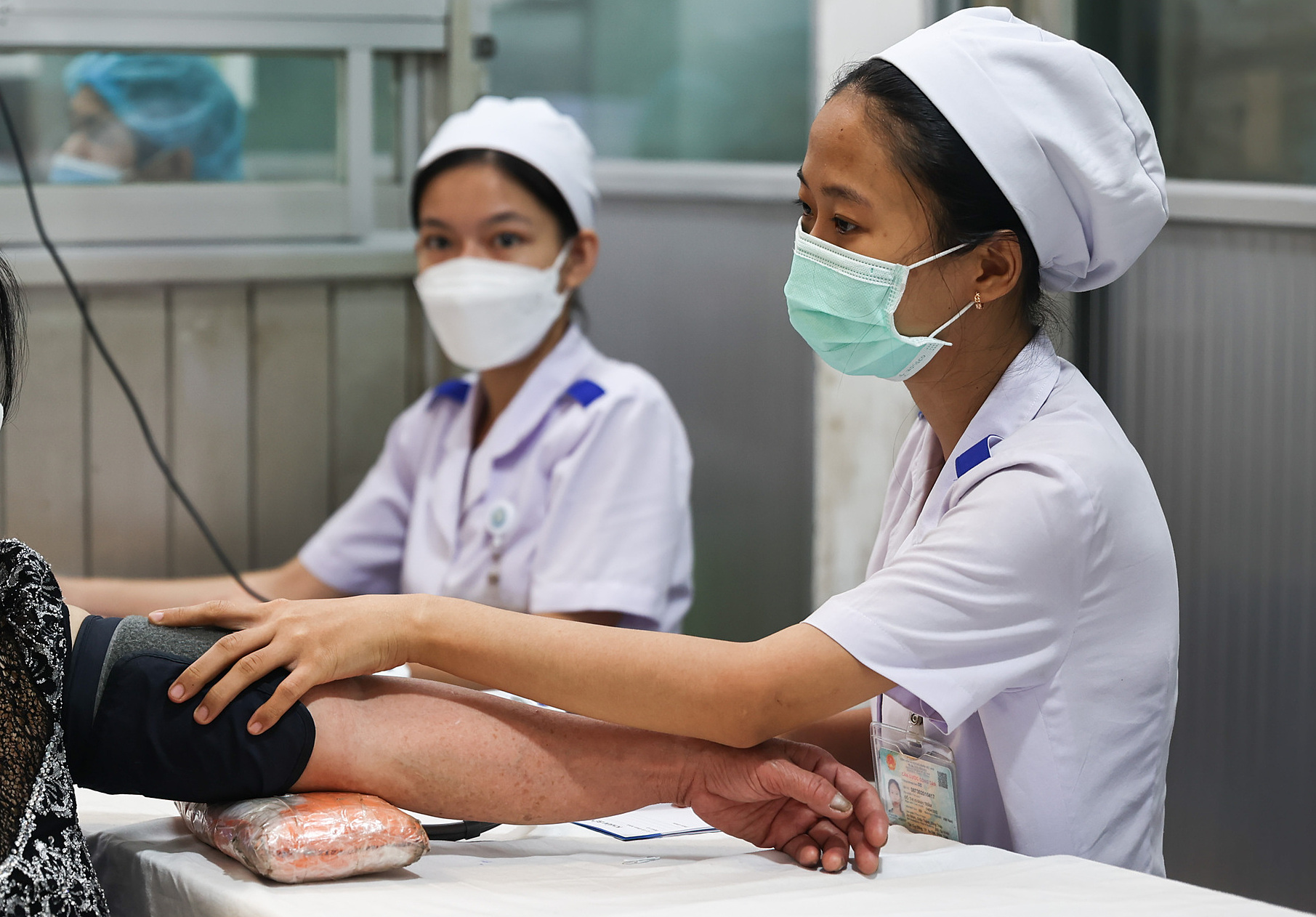Associate Professor, Doctor Nguyen Huy Thang, Vice President of the Vietnam Stroke Association, noted that many young people are complacent about their health, even with consistently high blood pressure. They don't realize that hypertension often has no symptoms, even when it exceeds 200 mmHg.
Professor Thang recalled sharing official information from the World Stroke Organization over two years ago, indicating that 1 in 4 people are at risk of having a stroke in their lifetime. At the time, some people reacted with skepticism about this statistic. In reality, the number may be even higher.
According to doctors, there are 5 main risk factors, likened to hidden "killers," that are silently increasing the risk of stroke, especially among young people. Controlling these factors early on is key to protecting health and life:
Hypertension: The silent killer
This is the leading cause of cerebral hemorrhage, a particularly dangerous type of stroke with a high mortality rate. The scary thing is that high blood pressure often doesn't cause any noticeable symptoms until it's too late. Many young people continue their normal activities with alarming blood pressure levels without realizing it.
Diabetes: The silent blood vessel destroyer
Chronically high blood sugar levels damage blood vessel walls throughout the body, including those in the brain. This creates conditions for plaque and blood clots to form, causing blockages and leading to ischemic stroke.
Dyslipidemia (high cholesterol): "Bad" fat causes blockages
High levels of LDL cholesterol ("bad" cholesterol) are deposited in the arteries, forming plaque. These plaques not only narrow the blood vessels but can also rupture, forming blood clots and causing a stroke at any time.
Obesity: A comprehensive burden on the body
Obesity is not just a weight issue. It is a direct risk factor for high blood pressure, diabetes, and dyslipidemia. A sedentary lifestyle, lack of exercise, and an unhealthy diet among young people today are the main causes of the increase in obesity.
Atrial fibrillation: Irregular heartbeat creates blood clots
Atrial fibrillation is a type of arrhythmia that prevents blood from being pumped effectively, causing it to pool in the heart chambers and form blood clots. When these clots travel to the brain, they block blood vessels and cause a stroke. This is a particularly dangerous risk factor that requires anticoagulant medication to control.
Lieutenant Colonel, Doctor Hoang Tien Trong Nghia, from the 175 Military Hospital, agrees. He states that the danger is that these underlying diseases progress silently with vague symptoms. Most patients feel healthy, so they become complacent and don't maintain treatment. Many people stop taking their medication when their indicators stabilize, or they only take some of the prescribed medications. This is a fatal mistake, as these conditions require long-term, almost lifelong, management.
Strokes caused by brain issues are often related to cerebral hemorrhage, a dangerous type of stroke with a high mortality rate. The main cause is uncontrolled high blood pressure. Hypertension-related strokes in Vietnam are among the highest in the world.
Meanwhile, sudden cardiac death results from a serious arrhythmia (such as ventricular fibrillation), causing the heart to stop beating effectively and unable to pump blood to nourish the body. Acute myocardial infarction is also a major cause.
Strokes are often severe and have serious consequences. Many people survive, but after a stroke, they cannot return to work, creating a significant burden on their families and society. Most stroke survivors experience impairment of many bodily functions, disability, weakened health, or suffer from after-effects such as paralysis, weakness on one side of the body, loss of speech, emotional disturbances, impaired vision, etc.
 |
Medical staff measure a patient's blood pressure. Photo: Quynh Tran |
"Fortunately, stroke is completely preventable," the doctor said.
To avoid a stroke, individuals should check if they have one or more of the above conditions. If so, they need to set goals to control their blood pressure, LDL cholesterol, and blood sugar levels, quit smoking, and use anticoagulants if atrial fibrillation is detected. For patients who have had a stroke, these factors need to be controlled with higher targets. If all of these risk factors are well-controlled by bringing the values to normal or below normal levels, the likelihood of a stroke is very low, and vice versa.
It is important to recognize the signs of a stroke to provide emergency treatment as soon as possible within the first few hours. Stroke patients may suddenly experience numbness or weakness in the face, arm, or leg, especially on one side of the body. Other symptoms include facial drooping, sudden inability to speak or difficulty speaking, blurred vision, headache, dizziness, and loss of balance.
Le Phuong












